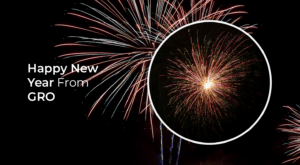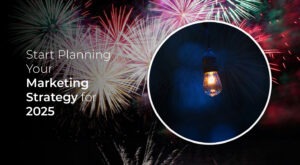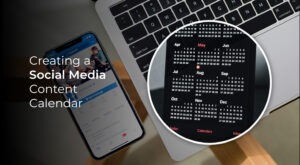Can you believe it? 2026 is just around the corner (it feels a bit surreal, doesn’t it?). With how fast the marketing landscape is shifting, we thought it’d be interesting to take a look ahead and explore some of the trends and changes we can expect to see in the next year. Strap in, because it’s going to be a wild ride!
- Hyper-Personalisation Becomes the Norm
By 2026, personalised marketing won’t just be a “nice-to-have” — it’ll be the baseline. With AI getting smarter by the day, marketers will have even more tools to tailor messages, content, and offers to individual customers based on their behaviours and preferences. It won’t be about just saying someone’s name in an email anymore. Marketers will be able to predict what a customer wants before they even know it themselves.
This will push brands to get even more specific with their targeting, which means they’ll need to become experts in data analysis and segmentation. In short, personalisation will be the thing to get right in the coming years.
- The Metaverse Will Be a Mainstream Marketing Channel
By 2026, the metaverse could be an everyday part of how we interact online, and brands will be jumping in with both feet. Virtual worlds, digital stores, and immersive brand experiences could become an integral part of the consumer journey.
It’s not just about creating a cool virtual store; it’ll be about offering unique, interactive experiences. Think live concerts, virtual showrooms, and branded events that make you feel like you’re stepping into another world. Brands that jump on this early will have the chance to build deeper, more engaging relationships with their customers.
- Voice Search and Conversational Marketing Go Mainstream
In 2026, you’ll likely be doing even more of your shopping, researching, and decision-making via voice search. With advances in voice technology, it won’t just be about asking Alexa or Siri for the weather anymore. People will use voice to make purchases, book services, and even interact with customer support.
Marketers will need to optimise their content for voice search, focusing on more natural, conversational phrases that people tend to use when speaking. We’ll also see more businesses using AI-driven chatbots and virtual assistants to carry out real-time conversations with customers. Brands that can master conversational marketing will stay ahead of the curve.
- Sustainability Will Be a Non-Negotiable
By 2026, consumers will demand that the brands they support are more eco-conscious and socially responsible. It’s no longer enough to talk about being sustainable — brands will need to show it through their actions, whether that’s in the products they sell, how they source materials, or the ways they treat their employees.
The pressure will be on for companies to demonstrate genuine efforts in areas like reducing waste, supporting ethical practices, and contributing to the greater good. For marketers, this means communicating sustainability efforts authentically, and not just as a marketing gimmick.
- AI-Generated Content Takes Over
It sounds like something out of a sci-fi film, but by 2026, AI-generated content will be the norm, not the exception. From blog posts to social media captions, there will be a lot more content being created by artificial intelligence. Of course, that doesn’t mean marketers will be replaced by machines. It’ll be about finding the right balance between AI-generated content and human creativity.
What’s exciting is that AI will be able to assist with things like writing tailored emails, crafting ad copy, and even generating social media posts in real-time based on data trends. But, as always, human oversight will be key to keeping things authentic.
- Video Marketing Will Become Even More Immersive
Video content has been on the rise for years now, and by 2026, it will have evolved into something even more interactive. Expect to see a lot more shoppable video content and live-streamed events. Brands will increasingly use live streaming to engage customers, whether that’s through Q&As, product launches, or behind-the-scenes glimpses of their operations.
People will want to shop directly from videos, and influencers will be offering real-time product demos during live sessions. It’ll be about creating a sense of urgency, encouraging real-time interaction, and making the entire consumer experience as immersive as possible.
- Privacy Will Be a Priority (Not Just a Buzzword)
With growing concerns over privacy, by 2026, brands will need to be more transparent than ever when it comes to how they collect and use customer data. Consumers will expect clear, easy-to-understand privacy policies, and brands that don’t respect this will risk losing their trust.
This will lead to stricter regulations and a shift toward consent-based marketing, where customers have more control over their data. For marketers, that means building strategies that are privacy-friendly and ethical while still delivering the personalised experiences consumers expect.
- Predictive Analytics Will Become a Must-Have Tool
By 2026, predictive analytics will be a major asset for marketers looking to stay ahead of the competition. With advanced AI and machine learning, brands will be able to predict customer behaviours, anticipate trends, and optimise campaigns in real-time.
Imagine being able to predict what your customers will want before they even know it themselves — that’s the power of predictive analytics. Marketers will be able to focus their efforts on high-potential leads and tailor campaigns to the exact moment when a customer is most likely to convert.
- Influencer Marketing Will Evolve Into Long-Term Creator Partnerships
In the coming years, influencer marketing will become less about paying for a one-off post and more about building long-term, authentic partnerships with content creators. Rather than chasing the biggest names with the largest followings, brands will increasingly work with creators who have smaller but highly engaged audiences.
These creators will help brands develop their voice, and their authenticity will resonate more with consumers than a traditional celebrity endorsement ever could. Expect to see more co-branded products and collaborations that feel more organic.



